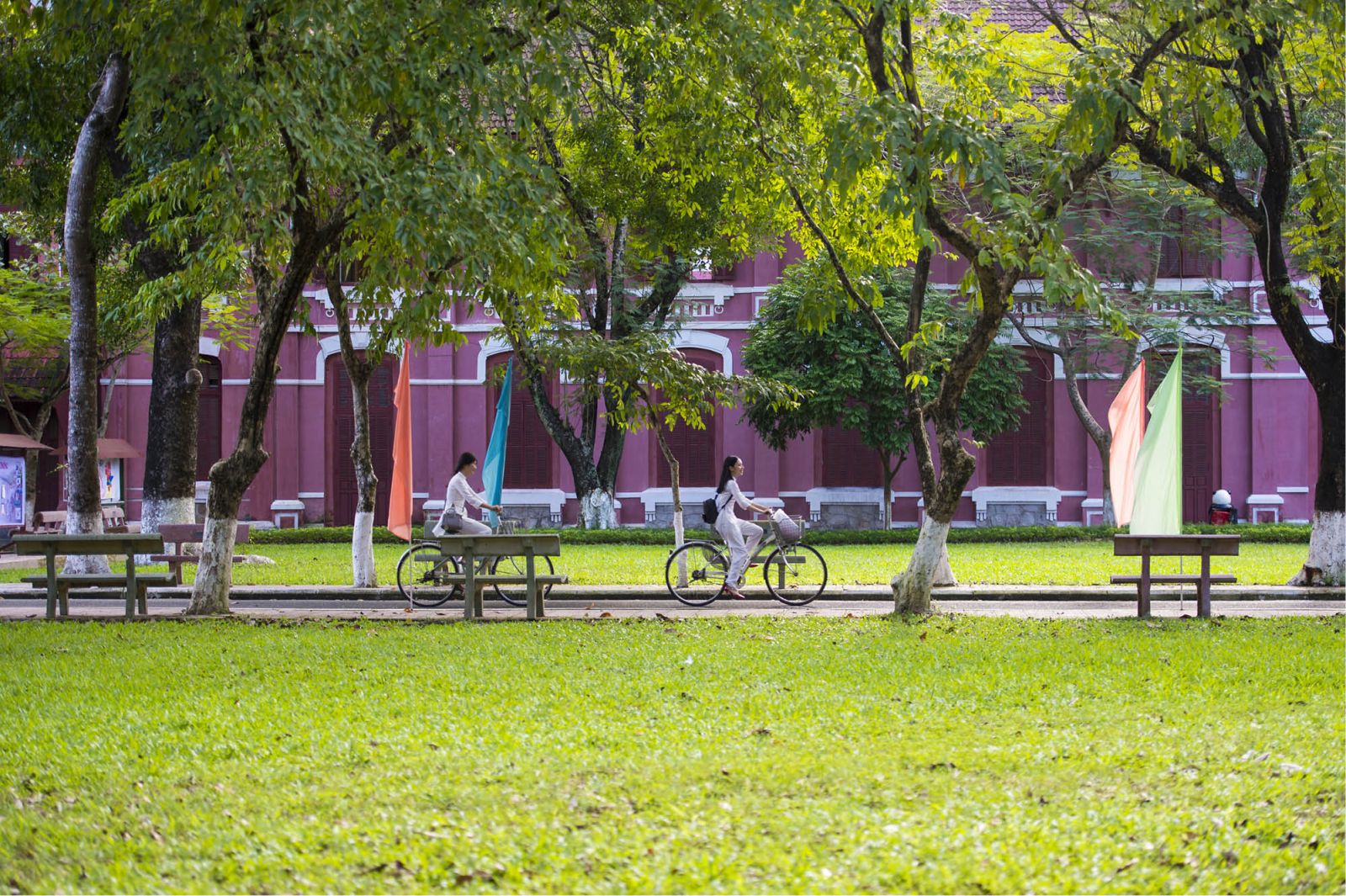
Dong Khanh girl students
Few people notice that in the imperial capital, women and their quiet work contributed a lot to the nobility and prosperity, both in and outside the imperial city.
In the east-meets-west context in the late 19 - early 20th centuries, with the appearance of schools for girls only, the girls’ role was extended, improved and promoted.
In Hue, School for Indigenous Girls in Hue (École des Jeunes Filles Indigènes de Hué), then Dong Khanh and, later, Thanh Noi, were typical schools of the country, which helped develop the quintessential tradition and virtues for Vietnamese women so that they would become a skilled labor force for the renovation of the country at the time.
In the early 20th century, negotiations between France and Vietnam resulted in establishing in Hue a co-educational French school (école mixte francaise de garçons et filles à Hue), as suggested by Auvergne, French Resident Superior of the Central, (Decree No. 230, dated July 5th, 1904 by Beau, French Governor-General.)
Accordingly, the school was managed by Mrs. Dewost (Marie-Angèle-Joséphine) from Caroulle. She was a college graduate and a novice teacher in the Central with the salary of 3.000 francs/year from July 1st, 1904.
In early 1906, as needed, the Central carried out a large-scale educational reform, transferring the elementary level at Quoc Hoc High School to Thua Thien French-Vietnamese School. Those girls at villages without all-girls schools could attend schools for children.
From the demand of the society and the special historical context of the transitional time, the French-Vietnamese elementary female education had been put into consideration since 1907; then the 6 all-girls schools were successively established in Vinh, Ha Tinh, Dong Hoi, Hue, Quang Ngai and Phan Thiet.
School for Indigenous Girls in Hue (École des Jeunes Filles Indigènes de Hué) was established on the campus of Dai Ly Tu, next to Nha Ho Thanh to the east-southeast, (presently Nguyen Hue High School.)
In the Imperial Capital of Hue, since many mandarins’ daughters needed to go to school, the all-girls school strongly developed. Initially, it was managed by a French female principal and a French female assistant. After that, 4 Vietnamese teachers who had graduated from the school came to work. According to the book High Schools in Annam (Annam Scolaire, International Colonial Exhibition, 1931), this school was established on March 1st, 1908 at an ancient house of the Nguyen Dynasty.
According to Thuc Luc Phu bien De luc Ky, in June, 1908 (Mau Than, the 2nd year of Duy Tan’s reign), because the school on the campus of Dai Ly Tu in the Citadel became too small, it was moved to Hung Nhan Quoc Cong Buu Kiem’s place.
According to the book History of Hau Bo School (by Nguyen Dinh Hoe, BAVH 1915), at the time, Emperor Thanh Thai granted prince Buu Liem part of the land of Thuong Bac for his residence.
Probably it was a small school with three compartments and two wings, low and dark. It looked even narrower because it was supported by the 16 pillars. The floor was cemented and the door and windows were glazed. The classroom was in the center with a desk for the teacher, a wardrobe, a blackboard and some pictures on the walls.
Despite its small size, there were up to 47 students. The French principal taught French, math and sewing; the Vietnamese assistant teachers taught Vietnamese, Chinese and French vocabulary. There were also two Vietnamese soldiers who worked as guards and did the cleaning up.
In 1909, the room was divided into 2 classrooms by a wall made of mud. One of the best students of the school was promoted to teacher. After 1910, the imperial court had renovated the school more modern at the location of the Teaching House (for princes). It looked simple outside, but was spacious inside. Besides, there was also Paul Bert School with 5 classrooms (presently Phu Hoa School).
However, since the schools were small-scale and could not meet the demand of the society, it was necessary to build immediately a bigger all-girls school.
The report of the Provincial Education Commissioner to the Resident Superior of the Central about the project of establishing all-girls schools in Hue stressed the fact that the present schools for girls in Hue could house only 150 students while the demand was so big.
The school for girls in the Citadel was small-scale and could not meet the demand. That was why Dong Khanh High School on the southern side of the Perfume River came into being in 1917. At Dong Khanh, students could benefit from syllabi, management and facilities of an advanced school.
It is noted that the School for Indigenous Girls was in operation together with Dong Khanh from 1917. They contributed to training the high-quality female labor force for the renovation of the country, including education, medicine and domestic science at the time.
That spirit was inherited and developed by Thanh Noi All-Girls High School, established in 1964.
School for Indigenous Girls in Hue, Dong Khanh and Thanh Noi were really golden pages in the history of Hue culture. They contributed to portraying the profile and virtues of traditional women in Hue. They need to be honored now.
Story: Tran Dinh Hang, Photo: Hoang Hai
